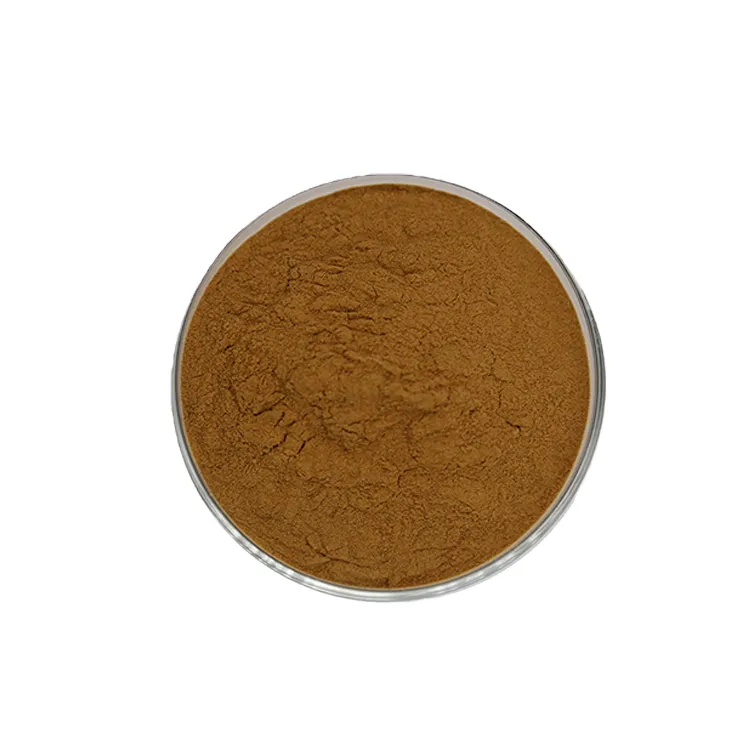- 0086-571-85302990
- sales@greenskybio.com
Is fig extract beneficial for diabetes? Are these all safe and applicable for diabetic patients?
2024-11-12

1. Introduction
Diabetes is a chronic metabolic disorder that affects millions of people worldwide. Management of diabetes often involves lifestyle modifications, medications, and in some cases, natural supplements. Fig Extract has been the subject of interest in relation to diabetes due to its potential health - promoting properties. However, it is crucial to determine whether it offers real benefits and is safe for diabetic patients.

2. Composition of Fig Extract
Fig Extract contains a variety of bioactive compounds. These include:
- Polyphenols: Such as flavonoids and phenolic acids. Flavonoids like Quercetin have antioxidant properties which can help in reducing oxidative stress. Oxidative stress is often elevated in diabetic patients and is associated with various complications.
- Fiber: Figs are a good source of dietary fiber. Soluble fiber in fig extract can help in regulating blood glucose levels by slowing down the absorption of carbohydrates in the digestive tract. This can prevent rapid spikes in blood sugar after a meal.

3. Potential Benefits of Fig Extract for Diabetes
3.1. Blood Glucose Regulation
The fiber content in fig extract plays a significant role in blood glucose regulation. As mentioned earlier, soluble fiber can form a viscous gel in the digestive system. This gel traps carbohydrates and slows down their digestion and absorption, leading to a more gradual increase in blood glucose levels. Some studies have suggested that regular consumption of fig extract may contribute to better glycemic control in diabetic patients. However, more research is needed to establish a conclusive relationship.
3.2. Antioxidant Effects
The polyphenols in fig extract are potent antioxidants. In diabetes, high blood sugar levels can lead to increased production of free radicals, which can damage cells and tissues. The antioxidant properties of fig extract can help in neutralizing these free radicals, thereby reducing oxidative damage. This may potentially slow down the progression of diabetic complications such as neuropathy, retinopathy, and nephropathy. For example, by protecting the nerve cells from oxidative stress, it may reduce the risk of developing diabetic neuropathy.
3.3. Cholesterol and Lipid Profile Improvement
There is some evidence to suggest that fig extract may have a positive impact on the lipid profile. It may help in reducing LDL (low - density lipoprotein) cholesterol levels, also known as "bad" cholesterol, while potentially increasing HDL (high - density lipoprotein) cholesterol, the "good" cholesterol. Abnormal lipid profiles are common in diabetic patients and are associated with an increased risk of cardiovascular diseases. By improving the lipid profile, fig extract may contribute to reducing the overall cardiovascular risk in diabetic individuals.

4. Safety Considerations of Fig Extract for Diabetic Patients
4.1. Blood Glucose Interactions
While fig extract may have the potential to regulate blood glucose levels, it is important to note that it could also interact with diabetes medications. For example, if a diabetic patient is taking medications to lower blood sugar, the combined use of fig extract may cause hypoglycemia (low blood sugar). Diabetic patients should closely monitor their blood glucose levels when starting to use fig extract, especially if they are on hypoglycemic medications.
4.2. Digestive Issues
The high fiber content in fig extract can sometimes cause digestive problems. In some individuals, excessive consumption of fiber - rich fig extract may lead to abdominal discomfort, bloating, gas, or diarrhea. Diabetic patients with pre - existing digestive disorders, such as irritable bowel syndrome (IBS), need to be particularly cautious when using fig extract. They should start with a small amount and gradually increase the dosage to assess their tolerance.
4.3. Allergic Reactions
Some people may be allergic to figs. Allergic reactions can range from mild symptoms such as itching, hives, or a runny nose to more severe reactions like difficulty breathing or anaphylaxis. Diabetic patients who have a known allergy to figs should obviously avoid fig extract. Even those without a known allergy history should be vigilant when using it for the first time and look for any signs of allergic reactions.
5. Current Research and Evidence
Currently, the research on the benefits and safety of fig extract in diabetes is still in its early stages. Most of the available studies are pre - clinical or small - scale clinical trials.
5.1. Pre - clinical Studies
Pre - clinical studies in animal models have shown promising results regarding the potential benefits of fig extract in diabetes. For example, some studies in diabetic rats have demonstrated that fig extract can improve blood glucose levels, reduce oxidative stress markers, and improve lipid profiles. However, it is important to note that results from animal studies may not always be directly translatable to humans.
5.2. Clinical Trials
There have been a few small - scale clinical trials investigating the effects of fig extract in diabetic patients. Some of these trials have reported positive effects on blood glucose regulation and antioxidant status. However, the sample sizes in these trials are relatively small, and the study designs may have limitations. Larger, well - designed clinical trials are needed to provide more conclusive evidence.
6. Recommendations for Diabetic Patients
Based on the current knowledge of fig extract in relation to diabetes:
- Diabetic patients should consult their healthcare providers before starting to use fig extract. Their healthcare providers can assess their individual health status, including their diabetes control, medications, and any pre - existing conditions, and provide personalized advice.
- If a diabetic patient decides to try fig extract, they should start with a low dose and gradually increase it while closely monitoring their blood glucose levels, digestive symptoms, and for any signs of allergic reactions.
- It should not be considered as a substitute for conventional diabetes management, which includes proper diet, exercise, and medications as prescribed by a healthcare professional.
7. Conclusion
Fig extract contains bioactive compounds that may potentially offer benefits for diabetic patients, such as blood glucose regulation, antioxidant effects, and improvement of the lipid profile. However, its safety for diabetic patients is not without concerns, particularly in terms of interactions with diabetes medications, potential digestive issues, and the risk of allergic reactions. More research, especially large - scale clinical trials, is needed to fully understand the benefits and safety of fig extract in diabetes. Until then, diabetic patients should approach the use of fig extract with caution and under the guidance of their healthcare providers.
FAQ:
1. What are the potential benefits of fig extract for diabetes?
Fig extract may have several potential benefits for diabetes. It could potentially help with blood sugar regulation. Figs contain certain compounds like dietary fiber which may slow down the absorption of sugars in the digestive tract, thereby preventing rapid spikes in blood glucose levels. Additionally, some components in fig extract might have antioxidant properties which could help in reducing oxidative stress associated with diabetes.
2. How does fig extract affect blood sugar levels?
The fiber in fig extract can form a gel - like substance in the digestive system. This slows down the digestion and absorption of carbohydrates, leading to a more gradual increase in blood sugar rather than a sharp spike. However, the exact impact on blood sugar levels can vary from person to person depending on factors such as overall diet, physical activity, and the individual's metabolic state.
3. Is fig extract safe for all diabetic patients?
While fig extract may offer potential benefits, it is not necessarily safe for all diabetic patients. Some diabetic patients may have allergies or sensitivities to figs. Also, fig extract may interact with certain medications that diabetic patients are taking. For example, if a diabetic patient is on medications to lower blood sugar, the combined effect of the drug and fig extract could potentially lead to hypoglycemia (dangerously low blood sugar levels).
4. Can fig extract replace diabetes medications?
No, fig extract cannot replace diabetes medications. Although it may have some beneficial effects on blood sugar management, it is not a substitute for the medications prescribed by a doctor. Diabetes medications are specifically formulated and dosed to control blood sugar levels within a target range, and they are often based on scientific research and clinical trials. Fig extract can, at best, be considered as a complementary approach to diabetes management.
5. How much fig extract is safe for diabetic patients?
There is no one - size - fits - fits - all answer to how much fig extract is safe for diabetic patients. It depends on various factors such as the patient's overall health, other medications they are taking, and their individual tolerance. In general, it is advisable to start with a small amount and monitor blood sugar levels and any potential side effects closely. It is also important to consult a healthcare provider before starting to take fig extract regularly.
Related literature
- The Role of Fig in Health and Disease"
- "Beneficial Effects of Plant Extracts on Diabetes: A Review with Emphasis on Fig"
- "Safety Considerations of Herbal Extracts in Diabetic Patients: Focus on Fig"
- ▶ Hesperidin
- ▶ citrus bioflavonoids
- ▶ plant extract
- ▶ lycopene
- ▶ Diosmin
- ▶ Grape seed extract
- ▶ Sea buckthorn Juice Powder
- ▶ Beetroot powder
- ▶ Hops Extract
- ▶ Artichoke Extract
- ▶ Reishi mushroom extract
- ▶ Astaxanthin
- ▶ Green Tea Extract
- ▶ Curcumin Extract
- ▶ Horse Chestnut Extract
- ▶ Other Problems
- ▶ Boswellia Serrata Extract
- ▶ Resveratrol Extract
- ▶ Marigold Extract
- ▶ Grape Leaf Extract
- ▶ blog3
- ▶ blog4
- ▶ blog5
-
Organic Tongkat Ali extract powder factory.
2024-11-12
-
How to make powder with ashwagandha extract.
2024-11-12
-
Rosehip extract manufacturers from China.
2024-11-12
-
The best cat's claw extract in nature.
2024-11-12
-
Chinese Dandelion Leaf Extract Suppliers.
2024-11-12
-
Thunder God Vine Extract
2024-11-12
-
Yohimbine Bark Extract
2024-11-12
-
Coix Seed Extract
2024-11-12
-
Ginseng Root Extract
2024-11-12
-
Alisma Extract
2024-11-12
-
Hedyotis Diffusa Extract
2024-11-12
-
Natural grape seed extract
2024-11-12
-
Aguaje Extract
2024-11-12
-
Buckthorn bark extract
2024-11-12
-
Epimedium extract powder
2024-11-12





















